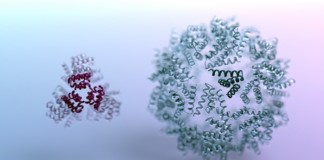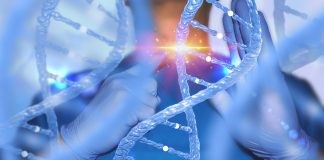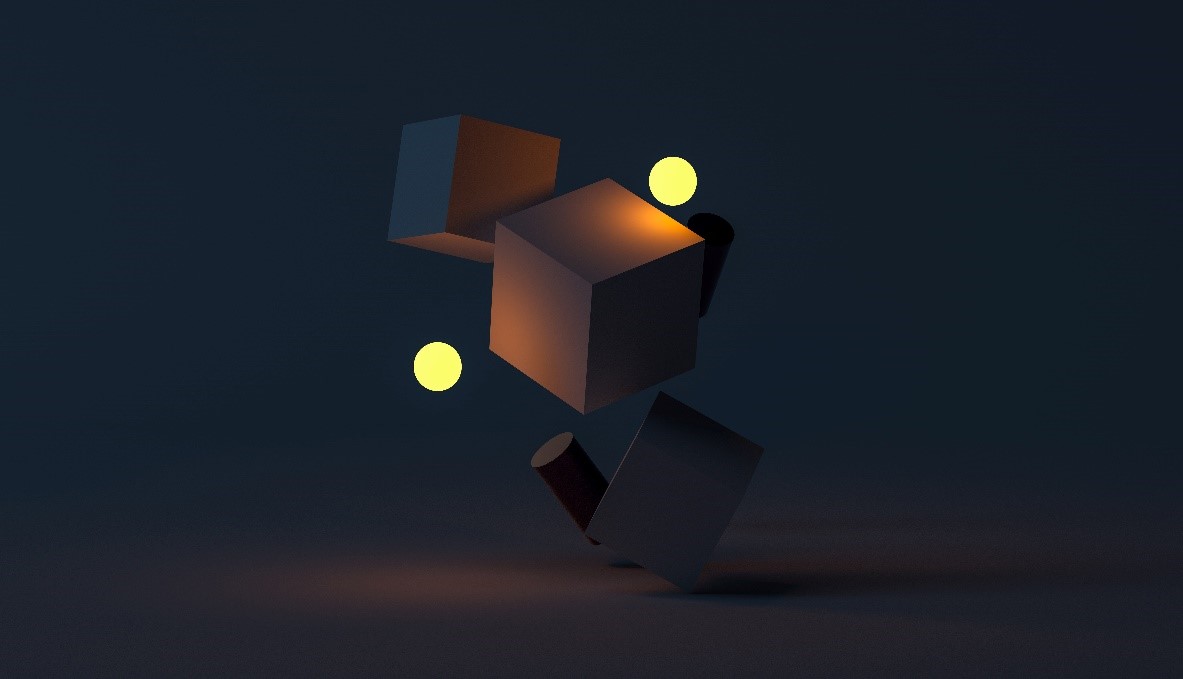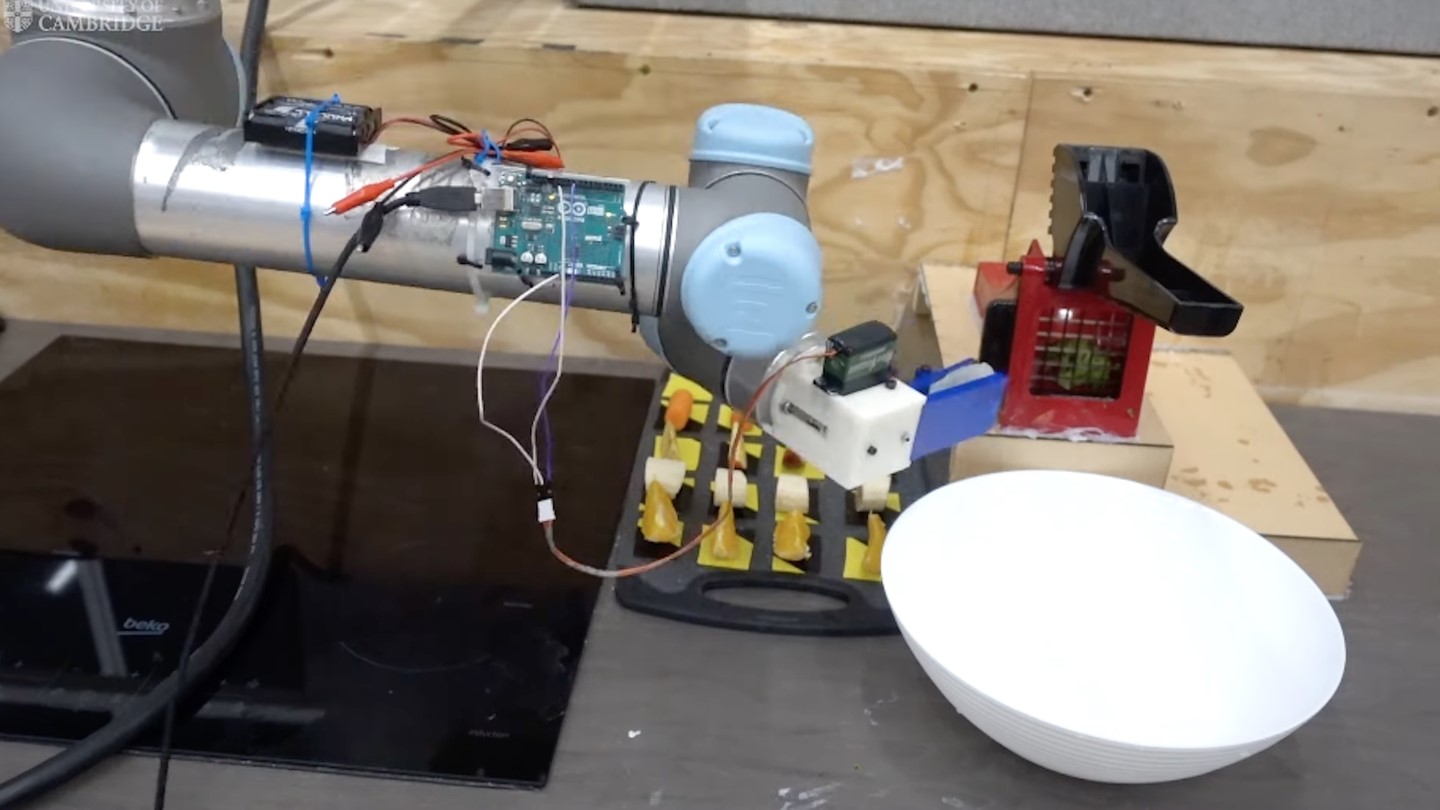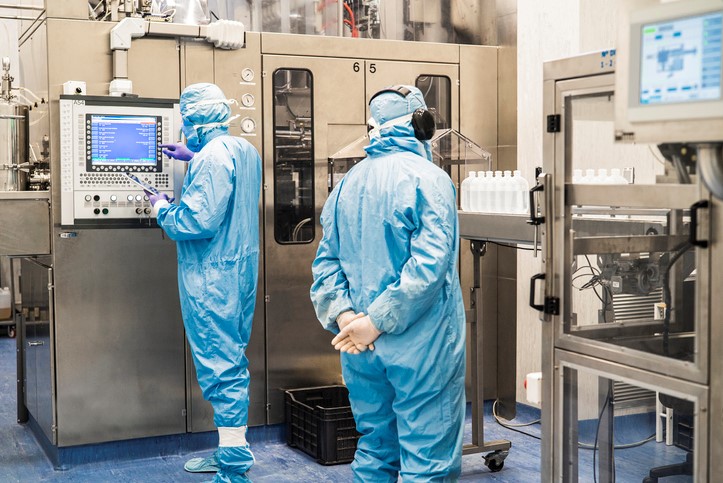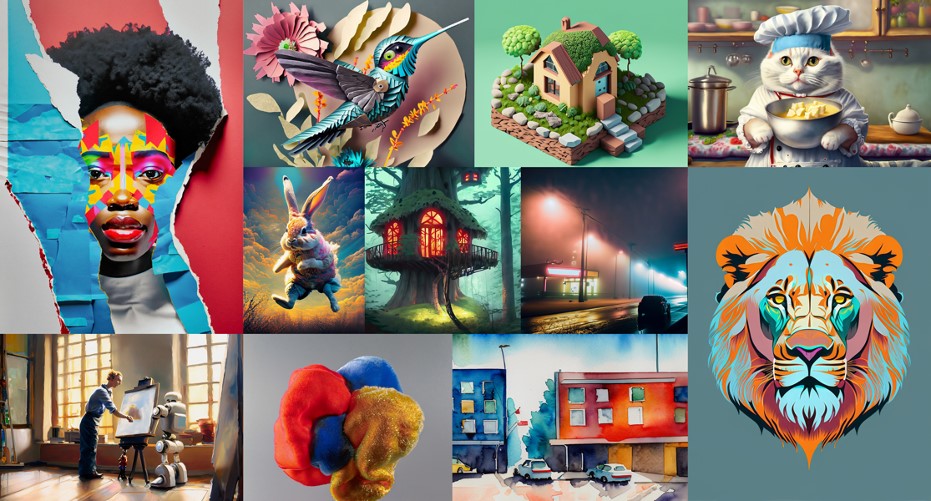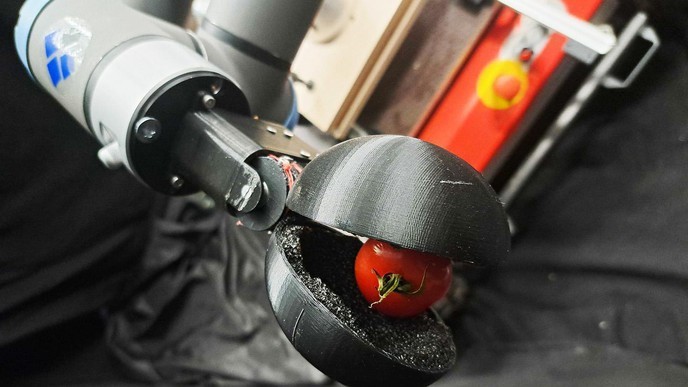AI and humans collaborate on first ChatGPT-designed robot
EPFL researchers at the School of Engineering have used the popular large language model Chat-GPT-3 to develop a robotic gripper for harvesting tomatoes, in a first demonstration of the artificial intelligence tool’s potential for collaborating with humans on robot design.
With their ability to process vast amounts of text data, and to use this information to answer prompts, neural networks known as large language models (LLMs) like Chat-GPT have been making headlines for their potential to change the way we write, learn, and even make art. Now, EPFL researchers have applied the technology to a new sphere: robotic design.

Figure 1. AI and humans collaborate on first ChatGPT-designed robot
AI and humans collaborate on first ChatGPT-designed robot is shown in figure 1. “Even though Chat-GPT is a language model and its code generation is text-based, it provided significant insights and intuition for physical design, and showed great potential as a sounding board to stimulate human creativity,” says Hughes.[1]
First, the researchers asked the AI model, “What are the future challenges for humanity?” ChatGPT proposed three: food supply, an aging population and climate change. The researchers chose food supply as the most promising direction for robot design because it was outside their area of expertise.
Using the LLM’s access to global data sourced from academic publications, technical manuals, books, and media, the researchers asked the AI what features a robot harvester should have. ChatGPT came up with a motor-driven gripper for pulling ripe tomatoes from the vine.
Once this general design was decided on, the researchers could move on to design specifics, including what construction materials would be used and creating computer code that would control it.
Currently, LLMs can’t generate entire computer-assisted design (CAD) models, evaluate code or automatically fabricate a robot, so this step required the researchers to adopt a ‘technician’ role where they assisted with these aspects, optimizing the code written by the LLM, finalizing the CAD and fabricating the robot. [2]
The collaboration between AI and humans in designing the first ChatGPT-designed robot could be a fascinating and groundbreaking endeavor. Here's how such a collaboration might unfold:
- AI Design Phase
- Iterative Feedback Loop
- Design Validation and Testing
- Ethical Considerations
- Prototyping and Manufacturing
By combining the creativity and expertise of humans with the generative capabilities of AI, the collaboration could yield a robot design that encompasses innovative features, efficient functionality, and a user-friendly interface. This partnership could help push the boundaries of what is possible in robotic design and bring forth new possibilities for human-robot interaction in various domains.
References:
- https://actu.epfl.ch/news/researchers-unveil-first-chat-gpt-designed-robot-2/
- https://newatlas.com/robotics/humans-collaborate-with-chatgpt-create-first-robot/
Cite this article:
Gokula Nandhini K (2023), AI and humans collaborate on first ChatGPT-designed robot, AnaTechMaz, pp.299



